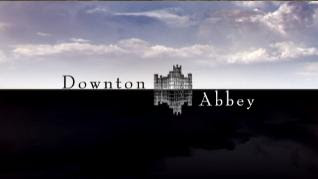Fresh heir(s) returns to Downton

Downton Abbey satisfies and delivers on everything a fan could want.
October 10, 2019
“Even good things come to an end.”
When under-butler Thomas Barrow, played by Rob James-Collier, whispered these words, it seemed a fitting conclusion to “Downton Abbey’s” six-season, 5-year run. However, in the age of reboots and revivals, it was only a matter of time before Barrow ate his words.
Similar to the under-the-staircase cohort of lady’s maids and valets, Downton Abbey satisfies and delivers on everything a fan could want with its lighthearted plot, wholesome character interactions, fiery comebacks and authentic British atmosphere.
The film picks up in 1927, almost two years after the show’s conclusion and brings back Crawley family favorites. The movie revolves around the announcement that King George V and Queen Mary, who are passing through the area, are planning to visit Downton. While questions arise about their commitment to royalty, most servants and family members are thrilled and thrown into a euphoric panic to prepare for their esteemed guests. They begin their preparation within the first ten minutes of screen-time and, like the director, they don’t waste any time. The events that follow the announcement are entertaining in typical Downton fashion. The character development that has occurred within the last year contributes to their own story but it is not too drastic that they become unrecognizable. Both the changing characters and society contribute to creating the classic Downton character. It’s nice to view a world in which the scariest thing is not getting listed as heir to another fortune and the worst word uttered at the dinner table is “bloody!”
The film is designed to entice fans of the show. It doesn’t spend time renewing and reminding the audience of former rivalries or relationships but is rather quick in introducing new ones with the arrival of the royal staff head by Mr. Wilson, played by David Haig. This move contributes to the movie’s efficiency but also gives the viewer a feeling of what the society of Downton Abbey is like: you should know the society’s rules before you move up in it (a slight motivation for first-time viewers to leave the cinema and watch the show first). Assuming the remaining audience members have seen the show, they will be privy to even more lavish setups and dresses, and breathtaking cinematography that encompasses the Yorkshire countryside more than the show ever did. No expense was spared and every shot is as stunning as the last.
While the plot and attempts to create “drama” fall short, the film serves a higher purpose to its fans. As a single standing film, its whole purpose is to reunite and spoon-feed viewers with iconic one-liners from its outstanding cast, with special attention to the Dowager Countess played by Dame Maggie Smith. With all its good intentions, the film did seem slightly clunky in its attempt to connect all the characters’ storylines. It didn’t have time to hang over one portion of the plot, and it did, at times, feel as though the director had a list of events, people and places that had to be allotted a portion of the 2-hour film.
Any loyal fan will leave the cinema with nostalgia and minor heartbreak with their final parting from Downton. Like the show, the film offers temporary escape and makes the viewer fantasize about life as a rich aristocrat in the 20th century. There is a guilt associated with seeing the film knowing that its romanticized time period was hardly this good for anyone and how the loss of that society has been a triumph of the 21st century. Yet there is a soothing feeling within all the kitchen madness and plastered smiles at dinner. Falling in love with something that wasn’t right is still an exit from all the wrongs happening now. While it may seem like life at Downton is nothing but bliss, let them wait until 1939.








